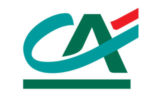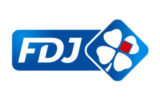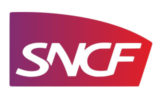Relocating a data center: a checklist of critical elements
Relocating a data center is not something that can be done impromptu. In this article, we provide you with a checklist of critical elements to foresee, plan for, and carry out in advance, during, and after relocating your IT infrastructure at the source and target sites.
ADVANCE / STUDY PHASE
- Validation of the application and inter-application flow mapping: update the applications and inter-application flows as needed in light of the relocation groupings.
- Identification of the staff affected: data center manager, IT department, network manager, and especially business divisions. Goal: determine the optimal schedule for stopping with the managers of each application.
- Development and/or construction of the target site: if the IT department is moving to a host, this step is obviously not needed!
- Inventories and updates: creating or updating an inventory file of existing equipment at the source site.
- Definition of the target design: relocating is an opportunity to rethink and optimize the design of the IT room (e.g., power supply, cooling, cable length, etc.) to avoid hot points and optimize the use of cold.
- Definition of the target patch matrix: based on the inventory of existing physical connections between servers at the source site, design the patch matrix for the target site.
- Definition and validation of the target network architecture: following the same principle as the previous point: switch placements, patch panels, cable lengths, copper (RJ45) or fiber optic connector boards, etc.
- Relocation groupings: based on the application mapping, create relocation batches (based on application interdependence).
- Relocation scheduling: determine the possible scheduling for stoppage based on the impact on business teams.
OPERATIONAL PREPARATION FOR RELOCATION
- Visits to source and target sites: to ensure source site compliance with the target urbanization.
- Validation of the patch matrix decided upon in the study phase.
- Operations scheduling: final approval of time slots, team availability, machine stoppage times, restarting times, etc.
- Chronogram: precise schedule of the moving day that goes minute by minute. For example: preparation = 15 minutes, deracking = 1 hour, storing in flight cases = 30 minutes, etc.
- Authorizations: check the authorization or clearance and ID for each contributor (e.g., first & last name, company, source and target site access authorization, electrical authorization, etc.) as well as license plate numbers for transport vehicles, among others.
- Physical validation of IT equipment inventories: at the source site, check the inventory file against the equipment that is actually present.
- Physical check of IT infrastructure: labeling of bays, IT equipment, and connections; directions for network port use, type of power, etc. Additionally, providing more operational information will help simplify operations on the move day (example: different colors for different batches).
- Ad-Valorem transportation insurance: based on the value of each piece of equipment being transported.
- Verification of IT equipment maintenance contracts: this is to check if it is possible to handle the equipment or if the manufacturer needs to be called in to maintain the warranty. For example, for a sensitive disk array, the manufacturer must be involved to ensure their teams are available on the move day.
- Supply of power and network cables: based on the patch matrix, ordering fiber and copper cables (RJ45), and other power cords, to ensure “clean” patching at the target site.
- Electronic security of data/applications/systems: before the relocation, data storage must be secured, applications must be appropriately stopped, etc.
ACTIONS AT THE SOURCE SITE
- Saving data/applications/systems: before applications are stopped, ensure operations are saved and up to date so that there is no risk of data loss.
- Stopping applications: follow the order of service stoppage based on their interdependence. For example: stop storage servers after application servers.
- Stopping equipment: follow manufacturer recommendations (such as cooling time before physically moving the equipment and rest time before restarting).
- Deconnecting weak and strong currents of IT equipment.
- Deracking IT equipment.
- Packaging and wrapping: IT equipment in flight cases as well as network and power cables to be reused at the target site.
- Loading and transporting to target site: the central stage of a relocation, it is mandatory for this stage to be entrusted to a specialized transporter.
ACTIONS AT THE TARGET SITE
- Unloading trucks.
- Unpacking and unwrapping IT equipment.
- Racking equipment.
- Reconnecting weak and strong currents of IT equipment based on the patch matrix.
- Smooth out cables in accordance with standard practice: ensure the patch area is physically clean at the site (bring together and attach cable harnesses, for example).
- Recipe: based on the previous elements and the work of the teams, the relocation manager ensure that elements of the determined target urbanization are compliant.
- Switching on of IT equipment.
- Start up equipment: follow manufacturer recommendations.
- Start up IT infrastructure.
Data center migration: no room for improvising
Data center migration requires careful preparation, at both organizational and technical levels, in order to limit or even avoid service interruptions. From shaping the migration masterplan to relaunching the servers, what steps need to be followed?
Read more





















